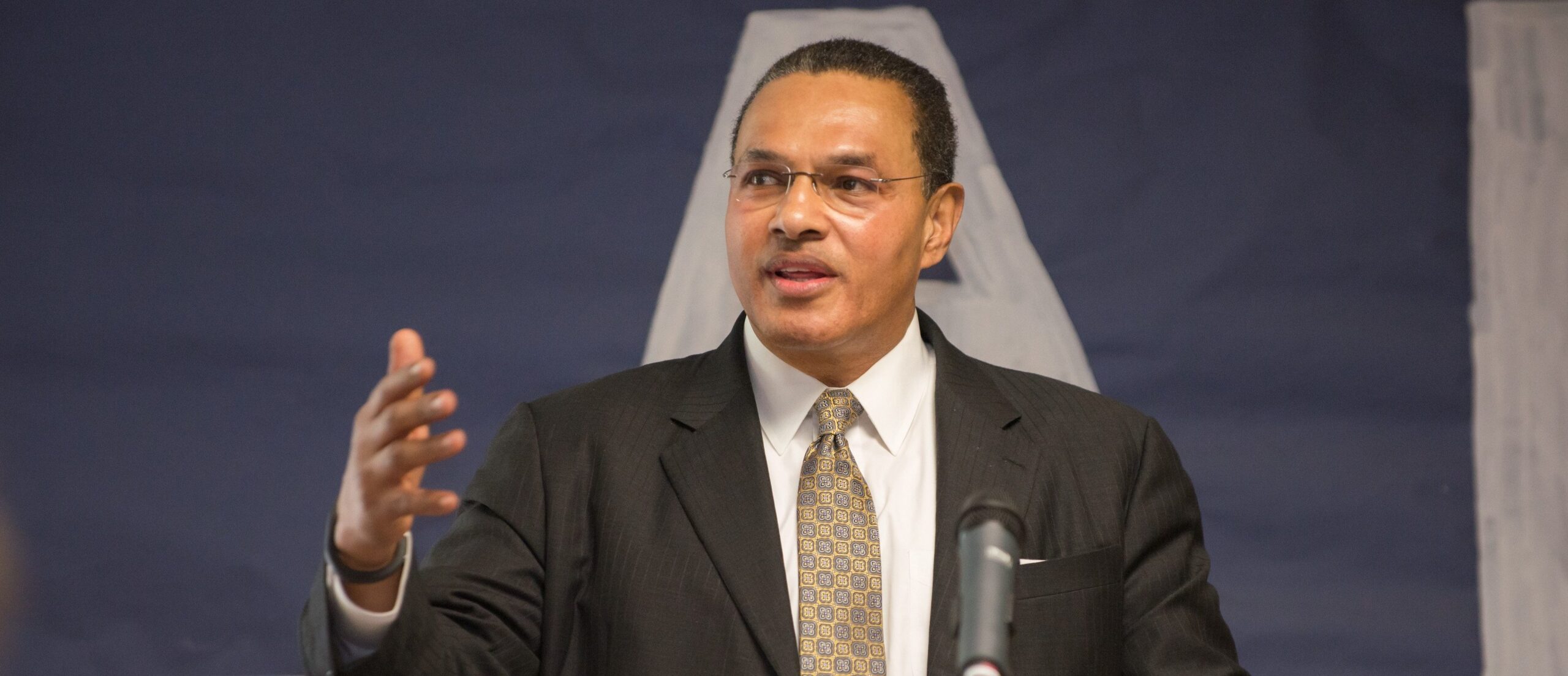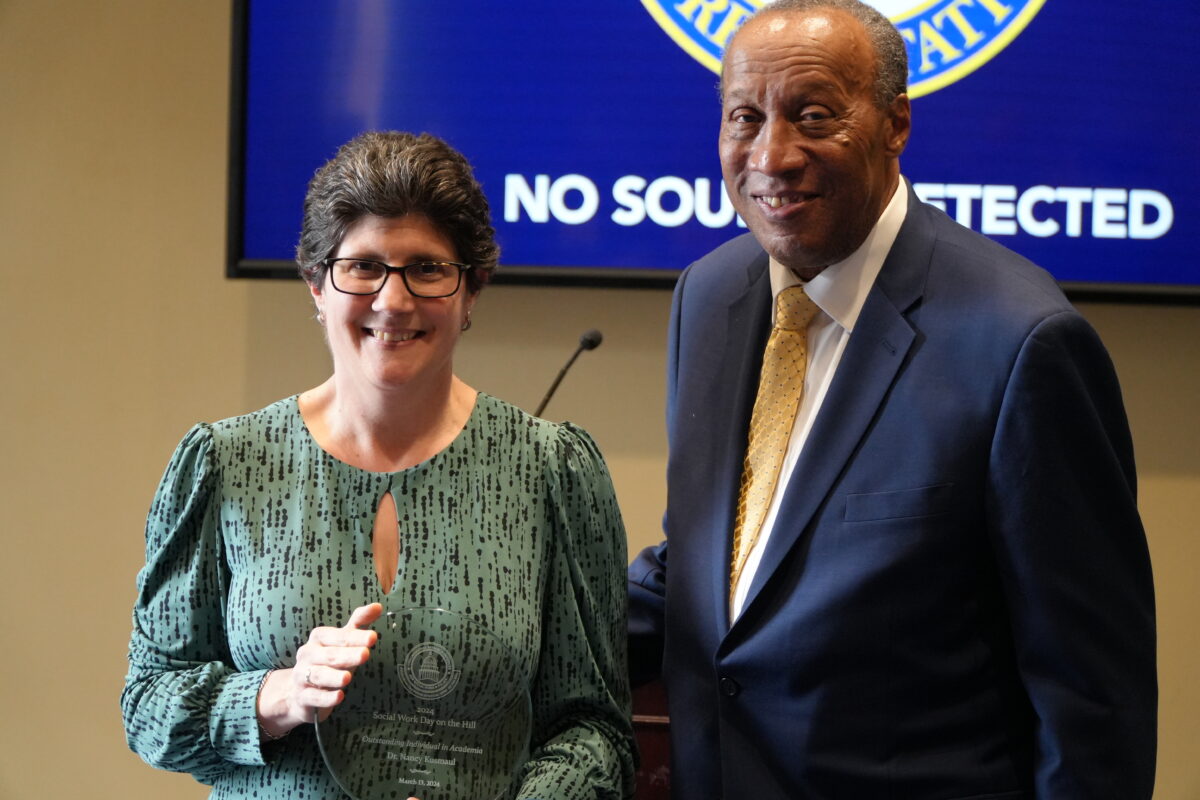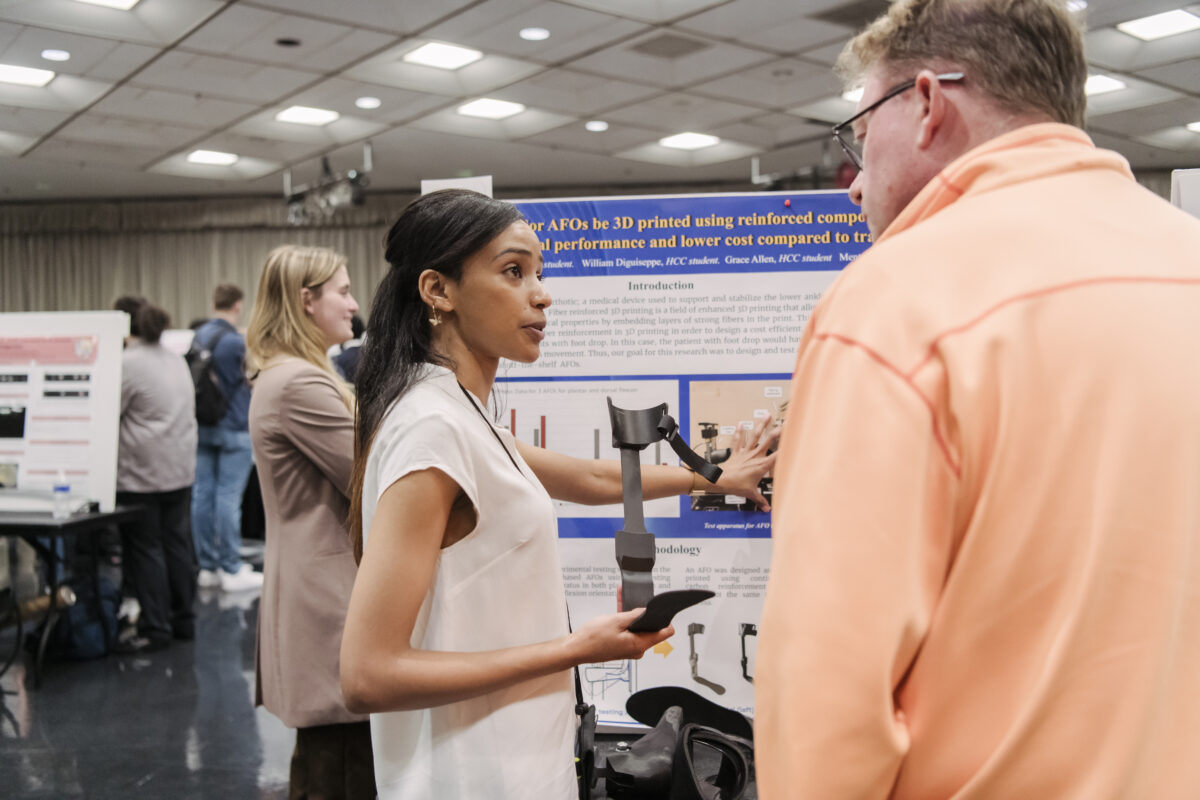UMBC President Freeman Hrabowski and Dean Julie Ross, of the College of Engineering and Information Technology, shared powerful insights on how to support student success during the U.S. News STEM Solutions Conference, held in Baltimore, May 18-20, 2016. The conference brought business, education, and government experts together to discuss the future of science, technology, engineering, and math (STEM) in society.
Michael Crow, president of Arizona State University, joined Hrabowski for the keynote panel focused on effectively supporting and retaining diverse students in STEM fields. Changes to the nation’s education system are necessary to increase the diversity and graduation rates in STEM fields, and to show students that they can succeed in challenging areas, both leaders argued.
“The culture of our country is not one that teaches children…‘you can do this and it’s going to be hard’,” said Hrabowski.“The challenge we face in this country is to rethink culture, not just of science but of our nation, and who can succeed in these disciplines,” he noted, emphasizing the need to provide a combination of support and high standards that encourage children to learn through persistence.
Ross joined Kevin Moore, dean of the college of engineering and computational sciences at the Colorado Schools of Mines, and Karl Reid, executive director of the National Society of Black Engineers on the panel “Priming the Pipeline: The Push for Diversity at Engineering Schools.” Their discussion focused on ways that schools can help students of all backgrounds succeed in engineering.
For UMBC, Ross explained, the goal is “inclusive excellence,” which goes beyond a commitment to “diversity” alone.
“Diversity is, ‘Who comes in our door, who do we enroll; who’s here?’,” said Ross. In contrast, “inclusiveness” prompts the questions, “‘What experience are those people having when they’re here? What is our climate?’…and the excellence piece is, ‘What are our outcomes?’”
Ross continued, “We have very high standards. It includes diversity, but it’s more than that. … Are our students from all different backgrounds being successful at equal rates?” Thanks to asking tough but essential questions like this, Ross explained, there is no gap in graduation rates between black and white students at UMBC.
Prior to taking the stage in the U.S. News STEM Solutions Conference, Ross provided details on UMBC’s approach to inclusive excellence, and efforts to increase faculty diversity to match the diversity of the student body, in the U.S. News article “Diversity Your Workforce: Leveraging the Employer-College Connection.”
That article also explores the value of university partnerships with top employers, and the particular appeal that UMBC’s focus on inclusive excellence has for companies seeking academically exceptional students from diverse backgrounds. “We have a longstanding partnership with UMBC because it is a top engineering school that attracts many people of color and women as engineering majors,” Jennifer Boyd, vice president of talent management at Exelon Corporation, told U.S. News. The investment of time and effort in partnering with UMBC has paid off, she said, in the enthusiasm of students in response to recruiters.
Image: President Hrabowski. Photo by Marlayna Demond ’11 for UMBC.




